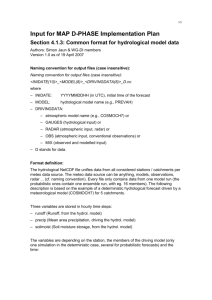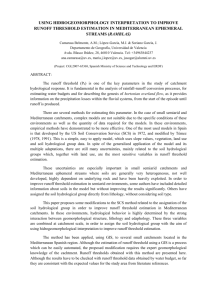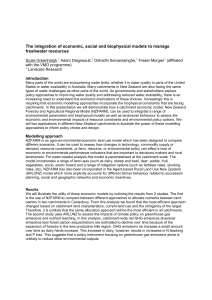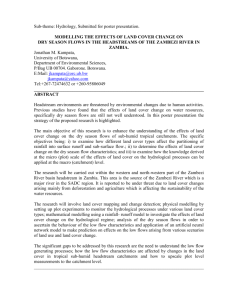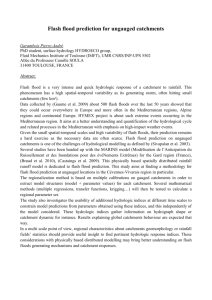Anexo 1: - UIBcongres
advertisement
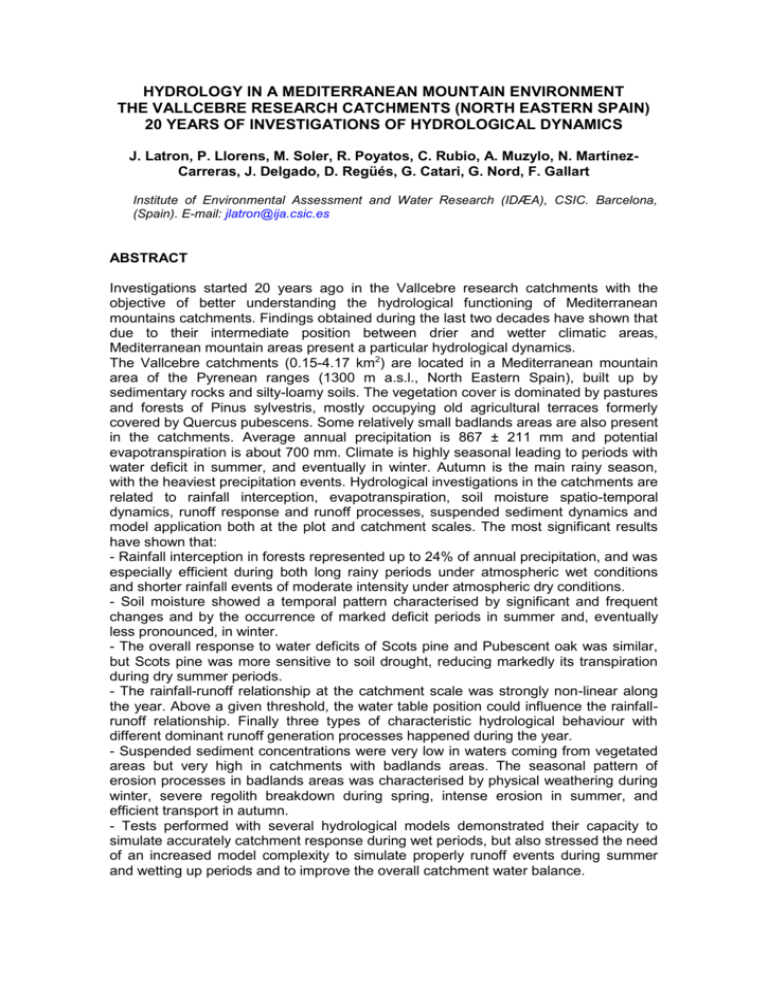
HYDROLOGY IN A MEDITERRANEAN MOUNTAIN ENVIRONMENT THE VALLCEBRE RESEARCH CATCHMENTS (NORTH EASTERN SPAIN) 20 YEARS OF INVESTIGATIONS OF HYDROLOGICAL DYNAMICS J. Latron, P. Llorens, M. Soler, R. Poyatos, C. Rubio, A. Muzylo, N. MartínezCarreras, J. Delgado, D. Regüés, G. Catari, G. Nord, F. Gallart Institute of Environmental Assessment and Water Research (IDÆA), CSIC. Barcelona, (Spain). E-mail: jlatron@ija.csic.es ABSTRACT Investigations started 20 years ago in the Vallcebre research catchments with the objective of better understanding the hydrological functioning of Mediterranean mountains catchments. Findings obtained during the last two decades have shown that due to their intermediate position between drier and wetter climatic areas, Mediterranean mountain areas present a particular hydrological dynamics. The Vallcebre catchments (0.15-4.17 km2) are located in a Mediterranean mountain area of the Pyrenean ranges (1300 m a.s.l., North Eastern Spain), built up by sedimentary rocks and silty-loamy soils. The vegetation cover is dominated by pastures and forests of Pinus sylvestris, mostly occupying old agricultural terraces formerly covered by Quercus pubescens. Some relatively small badlands areas are also present in the catchments. Average annual precipitation is 867 ± 211 mm and potential evapotranspiration is about 700 mm. Climate is highly seasonal leading to periods with water deficit in summer, and eventually in winter. Autumn is the main rainy season, with the heaviest precipitation events. Hydrological investigations in the catchments are related to rainfall interception, evapotranspiration, soil moisture spatio-temporal dynamics, runoff response and runoff processes, suspended sediment dynamics and model application both at the plot and catchment scales. The most significant results have shown that: - Rainfall interception in forests represented up to 24% of annual precipitation, and was especially efficient during both long rainy periods under atmospheric wet conditions and shorter rainfall events of moderate intensity under atmospheric dry conditions. - Soil moisture showed a temporal pattern characterised by significant and frequent changes and by the occurrence of marked deficit periods in summer and, eventually less pronounced, in winter. - The overall response to water deficits of Scots pine and Pubescent oak was similar, but Scots pine was more sensitive to soil drought, reducing markedly its transpiration during dry summer periods. - The rainfall-runoff relationship at the catchment scale was strongly non-linear along the year. Above a given threshold, the water table position could influence the rainfallrunoff relationship. Finally three types of characteristic hydrological behaviour with different dominant runoff generation processes happened during the year. - Suspended sediment concentrations were very low in waters coming from vegetated areas but very high in catchments with badlands areas. The seasonal pattern of erosion processes in badlands areas was characterised by physical weathering during winter, severe regolith breakdown during spring, intense erosion in summer, and efficient transport in autumn. - Tests performed with several hydrological models demonstrated their capacity to simulate accurately catchment response during wet periods, but also stressed the need of an increased model complexity to simulate properly runoff events during summer and wetting up periods and to improve the overall catchment water balance.

